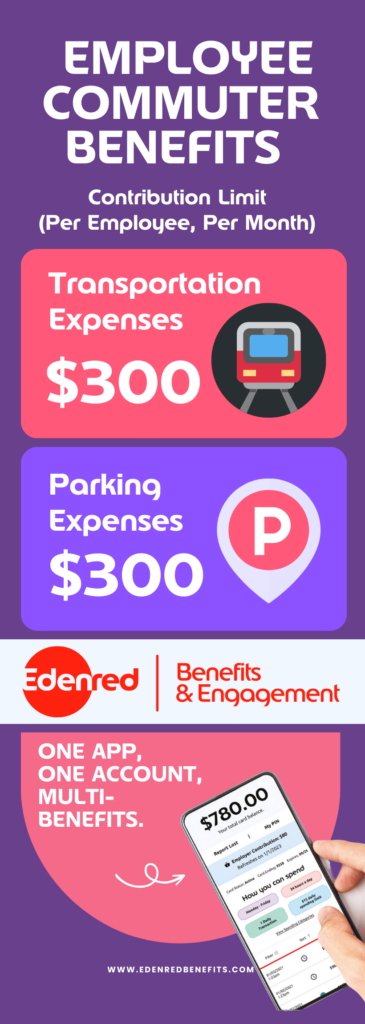I get it — you don’t actually need to offer a commuter benefits plan for employees. You just want some ideas to boost employee engagement or differentiate your employer brand.
Maybe you’re looking for something unique, like a second dental plan that will allow workers to go to the dentist 4x per year, because those make people excited to come to work, right?
Or you’re trying to decide which is a better idea: a baseball field wedged between your 2 glass buildings, an obstacle course in front of each restroom, or mandatory employee talent shows every Friday.
The last thing you want to know is all of the reasons why something that covers bus passes is where it’s at.
Hang on — I can sense I’m about to lose you. But hear me out because offering commuter benefits can make you as cool as Sophia Loren on a Vespa. Or at least they do more for employees and for your business than you might think. Even if you’re 1000% sure your employees won’t ride a bus to work, there are still reasons why you may want a transit plan.
What Exactly IS a Commuter Benefits Plan or Program?

Commuter benefits aren’t actually just repackaged bus passes. They’re non-traditional benefit plans, a.k.a. “perks,” that employers offer to help ease some of the pain of commuting to work — with cold, hard cash. By cash, I mean tax breaks on the wages that employees contribute and any cash you might also want to kick into the employee’s benefit fund.
All told, an employee can set aside pre-tax dollars specifically for commuting expenses of up to $300 per month for allowable transportation or transit and another $300 per month for parking can be designated “pre-tax.” That’s $600 total.
And about bus passes? Yes, they’re covered but they’re not the only reimbursable way to get to work. Train, subway, light-rail travel and vanpools are also pre-tax benefits. Paid parking as well as bike maintenance and repairs also qualify.
BTW, you can extend the reach of covered commuter benefits further, depending on who you work with for your plan. For example, at Edenred Benefits, we frequently customize mobility solutions plans, which can cover other commuting costs with post-tax employee funds and/or employer contributions and also tap into some key partnerships with Lyft and Spot Hero and also allow post-tax funds to be used toward the cost of e-scooters rental, bike sharing, and other transportation options, too. Your team can look as cool as Sophia Loren riding a Vespa thanks to you.
Pros: What a Commuter Benefits Plan Can Do for Your Business
I’d like to tell you that a commuter benefits plan will be transformative for your workplace, that every employee you’ve ever loved will stay on for life, your team’s output will soar to new heights, and those dingey beige walls will magically repaint themselves sunshine yellow.
But that could be a slight exaggeration.
But there are benefits to adding a commuter benefits plan or if you’re reassessing the one you already have. These include:
1. Transit benefits lower the tax burden for employees (or more cash in hand for video streaming)

No, it’s not a raise, but employees can sock away, pre-tax, up to $600 PER MONTH for use on qualified transportation benefits. If you have an employee who makes about $4,500/month, that’s almost 12% of their take-home pay that they’re not paying taxes on. It’s also the equivalent of more than 38 subscriptions to one of their favorite video streaming services or 170 packs of gum, although neither of those is covered by commuter benefits, but you get the idea.
Lower tax burdens may not sound sexy but employees who commute to work usually do factor in the cost of commuting when they stay at or move to a new job, so it’s nice when they get a break on an expected expense. We’ve calculated that your $4,500/mo employee would have saved about $1,200 in taxes in 2022 by maxing out their pre-tax deductions. That would cover about an entire year of video streaming on their favorite big-name provider plus 2 packs of gum per month and a few days each week of a very expensive cup of coffee for the trip. If that doesn’t say “transit-warrior,” I don’t know what does.
2. Transit benefits lower payroll taxes for you, the employer
Guess who else saves money? YOU! If your employee sets aside pre-tax dollars each month for transportation benefits, you also have a lower FICA liability (Social Security and Medicaid taxes) on that employee. Average savings? $40 per employee per month. That feels like streaming-and-gum for the whole team.
3. Commuter benefits prove that your environmental commitment isn’t a sham

You know how you’re always telling recruits that your company supports ESG strategies and has an important environmental mission statement? With commuter benefits, you show it, too. When? How? In every single paycheck since employees’ pre-tax contributions for public transit can be directly deducted from their paycheck. BTW, you’ll say it best with a system that’s really easy to use and is accessed at the transit turnstile with a single card that can also access the other cool perks and non-traditional benefits you offer.
If you’re shaking your head right now because you have workplaces in locations where pre-tax benefits for buses and trains and bicycling either don’t exist or aren’t practical for everyone, or because you’re 1000% sure your employees won’t take a bus to work, DO NOT THROW IN THE TOWEL! We regularly structure mobility solutions plans that include carpools and vanpools, ride sharing, e-scooters, e-bikes, and other options for businesses like yours and for businesses in transit-heavy locations, too. Because who doesn’t love some options? Ask around. Find a provider that does the same.
4. Commuter benefits can help return-to-office resisters actually return to the office

Do your return-to-office resisters need more encouragement to come back to roost? “We have a cool new transportation benefit that’s going to help you spend less of your paycheck on taxes!”
Just try to convince me that message isn’t enticing — our universal distaste for paying taxes has been holding steady for 250 years, doesn’t seem to be wavering, and may be the only thing we can all discuss peacefully at holiday dinners now.
5. Transportation benefits show that your employer brand goes beyond doing the bare minimum

In most of the U.S., commuter benefits are just nice-to-haves, not a requirement. If this is you (and if you have to ask if it is, that likely means “yes”), consider transit benefits as a cool employer brand differentiator. Lower taxes for you and the employees who participate, a cool benefits card that helps employees get through a turnstile, pre-tax deductions that add up to extra cash-in-hand, a fantastic move for the environment, and maybe a way to make the people in Alan’s carpool a little more okay with his terrible taste in music or the onion-and-butter sandwiches he eats in the car.
Use commuter benefits as the wildcard benefit that shows you care. Seriously. If you’re in a market where your competitors aren’t offering transit benefits, talk about it. This is a differentiator!
BTW, if you want to see a list of where commuter benefits are required and for whom…
- Philadelphia: 50+ employees working 30+ hours per week
- Seattle: 20+ employees working 10+ hours per week
- New York City: 20+ employees classified as “full-time”
- Washington D.C: 20+ employees working 20+ hours per week
- Los Angeles: 50+ employees
- Berkeley and Richmond, CA: 10+ employees
- Bay Area (SF, Oakland, San Jose, and more): 50+ employees, averaging 20+ hours per week
- New Jersey (statewide): 20+ employees
And, if you’re in one of the above geos and already have a plan that no one is excited about or don’t fit the “required compliance” mold? Offer a better commuter benefits plan. I’d suggest one that covers e-scooter and moped rentals, too, and can score you a parking spot to call your own with SpotHero or zip you around town through Lyft, etc., so you’re 1-upping the competition.
Cons: Reasons Why You Shouldn’t Offer a Transit Plan If You’re Not Required To
I promised you I would also tell you the bad things about offering commuter benefits when your business isn’t required to. Here’s what I have:
- Your transit plan does good things for the environment, but you’re still angry at Mother Nature for the freak snow storm that canceled your 4th-grade soccer game when you were destined to be MVP. I get it. Sometimes it’s tough to let go.
- Once your employees started returning to the office, you realized how noisy they get when they’re excited about a new benefit. You, on the other hand, went back to the office because you couldn’t think over the noise at your home. Where can a person get a little peace and quiet?
- We should all be paying more in taxes. End of story. That may not be the most popular sentiment ever, but I get where you’re coming from. Better funding for education, improved infrastructure. Sure. Just 1 question: how does that go over at Thanksgiving dinner?
- Differentiators are overrated in today’s job market. Um, I got nothing here.
BTW, if you need a good commuter benefits plan or just want to find out what one could do at your business, get in touch.








